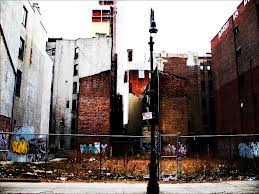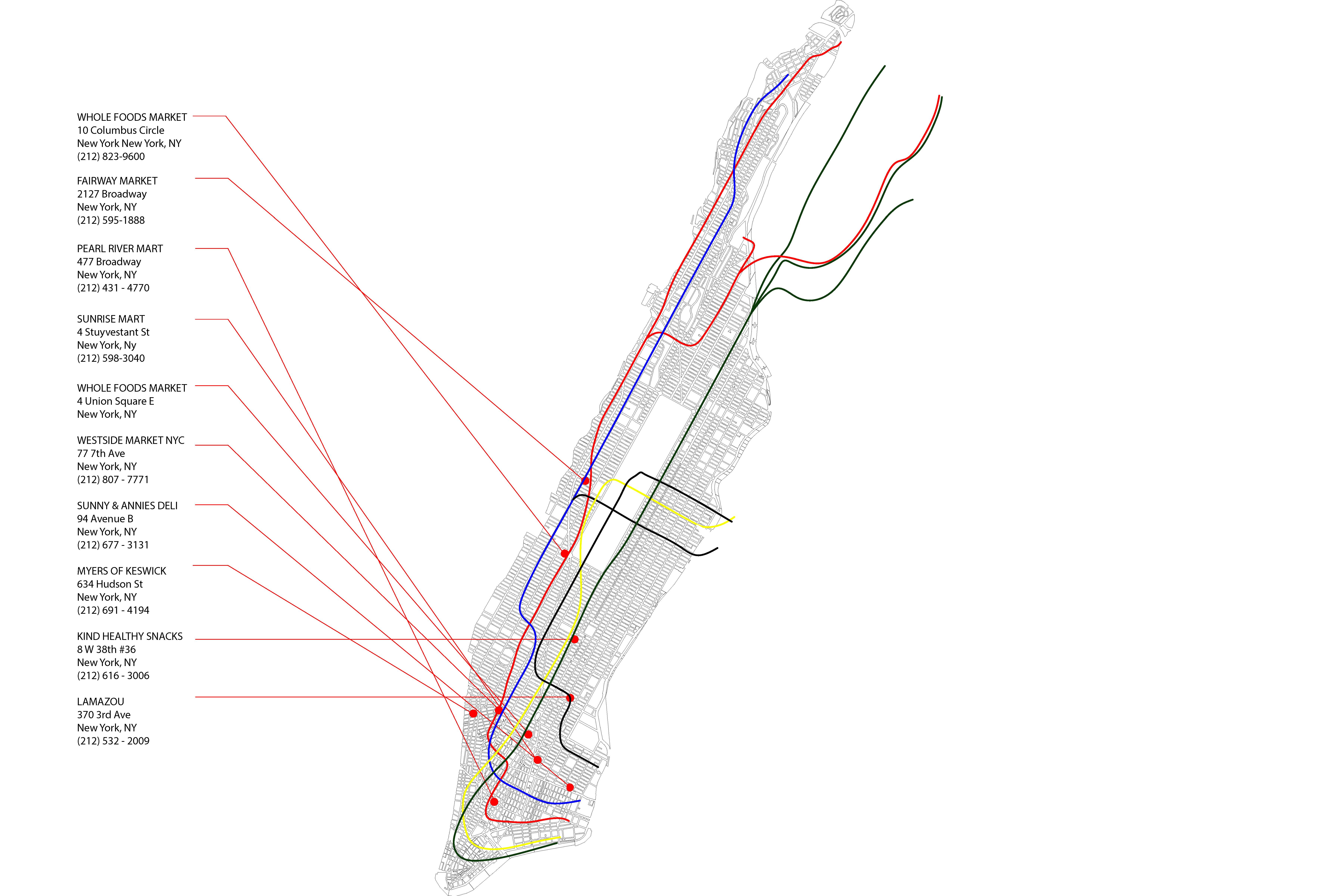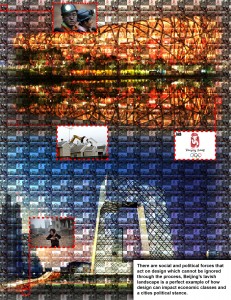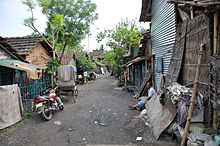Author Archives: Jared Grace
Sao Paulo
Sao Paulo is transforming favelas and informal cities into a new middle class through new ways of urban design and infrastructure. This gives Sao Paulo a chance to rejuvenate their city and break the barriers between what is considered the slums and formal cities. To me this is an exciting moment for Sao Paulo and possibly the rest of the world. Sao Paulo is solving problems that the rest of the world has not yet met head on. They are designing a city in which poverty is mitigated simply through well thought out design. Sao Paulo may become a new precedent for the world to follow once this design is proven efficient.
The fact that they are braking the barriers between the poor, middle class, and affluent individuals within the city is amazing. With the help of programs such as Programa de Aceleracao (PAC) and Plano Municipal de Habitacao (PMH), the transformation of the informal city is made possible. The reading states Sao Paulo still needs work, however they are moving in the right direction. The reading refers to the rise of the people in the slums as the “new middle class” who will provide an opportunity to investigate new demands for the city’s urbanity. This is very exciting, the simple fact the new ways to treat the urban fabric in Sao Paulo will emerge through meeting the new demands of this city’s urbanity is quite exciting.
Projects such as the Antonio Creek Urban Project shows the new methods of design taking place for Sao Paulo, the project is to design a drainage system and the to reconfigure open spaces while simultaneously appropriate this system in a way the prevents future illegal activities. These projects are finding ways to appropriate the use of space through thoughtful design strategies while changing the urban infrastructure at the same time.
World wide Problems
Look Closer
Architects?
“Architecture is a process of giving form and pattern to the social life of the community. Architecture is not an individual act performed by an artist – architect and charged with his emotions. Building is a collective action.” (Hannes Meyer, director of Bauhaus, 1928 to 1930) I find this quote interesting because I think it implies a certain obligation which every Architect must fulfill in terms of designing for the well being of the human race, however the “emotional egotistic artist – architect” only puts himself before good design. We, as aspiring architects, must realize how important our work becomes, and how many people are effected by our decisions.
The role of the architect is very dynamic and must be able to provide a service for a wide range of individuals on both side of the economic spectrum. The Idea of designing with a utopian ideology isn’t realistic enough in order to solve some of the problems, which we face today. In a perfect world where utopia is attainable and everything is perfect then these ideas would be fine. However we live in a world that is far from perfect and utopia is just a place, which well-educated artistic architects can speak pedantically for hours everyday and not solve any real issues facing urban areas today.
So what is the architect to do to? Can design solve issues in areas with an overwhelming plight in areas of extreme poverty? I’m not sure of the answer to this question, however, we can start by responding to the issues at hand and not hiding behind our theoretical ideas of the world. Architects have more power than most people can understand, we must take advantage of our position in society in order to make a difference that impacts people as whole and not just certain individuals with exceptional socioeconomic status’s.
Architecture as Science
When thinking about architecture as a science, one can assume this discipline is highly complex and can also be described as an illusive field with a broad sense of existence. Professors and other students have often asked me, “What is architecture?” As I begin to answer, they then ask a plethora of questions which imply contradicting characteristics in my logic. However, these same individuals cannot give an answer themselves. I see this as a problem within Architecture in today’s society. So many designers have different definitions for the term Architecture, but then we wonder why our cities do not have a cohesive design, which can function as a whole instead of segregated autonomous pieces of infrastructure.
According to Manuel Delanda in Organic life, a new paradigm must be implemented in order to change the way we view cities towards a positive outcome. But what will that paradigm be? Could it be the realization that suburbs are unnecessary and an ostensibly dense from of living should become the new norm for our society? So far we have spoke about informal cities, and how there is a method to the seemingly chaotic madness that occurs on a day-to-day basis. I see these methods as a contemporary paradigm that could cause a change in our basic assumptions.
In the “Emergence in Architecture” reading it says,” Emergence requires the recognition of buildings not as singular and fixed bodies, but as complex energy and material systems that have a life span, and exist as part of the environment of other buildings, and as an iteration of a long series that proceeds by evolutionary development towards an intelligent ecosystem.” I would like to replace the term “buildings” with the term “cities”. We should look at cities as complex energy and material systems that have a life span and exist as part of the environment of other cities. Cities are made up of neighborhoods, and neighborhoods are made up of a diverse group of individuals who occupy them. Our neighborhoods constantly change, some for the better, and in most cases for the worse. In the latter scenario, we see neighborhoods, which were once highly coveted areas turn to “ghettos” filled with crime and poverty. However, if this highly coveted span of a neighborhood was taken into consideration before it came to fruition we could possibly avoid the downfall of certain areas, which inevitably separate our cities today.
Static vs Kinetic or Static w/ Kinetic?
“ Today, Indian cities are comprised of two components occupying the same physical space. The first is the static City. Built of more permanent material such as concrete, steel and brick, it forms a two – dimensional entity on conventional city maps and is monumental in its presence. The second is the Kinetic City, incomprehensible as a two – dimensional, this is a city….” Pg. 108.
The static and Kinetic City coexist in the same space and differ in quality and physical characteristics. There is always a negative connotation that is attached to Kinetic City. Made of recycled metal and second hand materials found around the city, the Kinetic city is seen as a “slum” or poor area that contaminates areas with its austere conditions and temporal qualities. However qualities of this Kinetic city augment the “Static city” the highly coveted spaces with its monumental / traditional qualities. How could this be? How could the static city benefit from such a space that looked down upon in some instances? These two cities implies a dual quality within a city that is quite fascinating.
“…..The challenge in Mumbai is to cope with the city’s transformation, not by exaggerating its dualism, but by attempting to recognize these opposing conditions that we must accommodate and overlap varying uses, perceptions, and physical forms.
In other words, the Static city can not thrive without the Kinetic City and vise versa, these two cities must merge in order to provide an innovative way of life that may create fantastic networks and other characteristics that no other city contains.
Learning From the Slums
Austere conditions with less than the bare necessities to sustain a healthy lifestyle would be considered deplorable to most of Western civilization. One room surrounded by corrugated metal, no electricity, running water, heating or cooling systems, or even windows is unfathomable to most of the United States. However these conditions are home to so many across the world who not only live through these conditions, but also raise families and provide for loved ones as well. Informal cities are frowned upon amongst those who simply don’t understand the current crises facing urban conditions around the world. With such an increase in population, and no way to regulate a healthy way of life, people begin to take matters into their own hands in order to provide for loved ones. Is there value is this meager way of life? Is there an ostensible freedom found in slums and informal cities that most individuals find highly coveted? Slums always have a negative connotation, however I find a happy contradiction within this lifestyle that emanates through the garbage, and those who dwell within these spaces. From the readings there seems to be a sense of ownership and pure happiness among those who occupy informal cities. From a distance, informal cities are ostensibly chaotic, filthy and uninhabitable areas. Then a closer look may imply organization and a dynamic way of life that supports and maintains this increase in population. Lagos is a great example of a congested city that contains these chaotic features but simultaneously maintains a sophisticated network of organized systems. Inherently in Lagos is a dynamic way of living, which comes about through the constant appropriation of spaces by occupants. Any paved space will be occupied in some way in order to accommodate everyone. I wonder if there are certain aspects to these informal cities and slums that can b applied to our “perfect cities”, can we learn from Lagos or Mumbai? Do these areas offer ideas that will inevitably allow the “rethinking” of all cities? Population growth is an inevitable issue and there doesn’t seem to be a politically correct or humane way of addressing this fact. The answer may lie within these areas that we look down upon and consider waste lands of poor individuals of which we can never coexist with. Maybe we can learn from those who have come face to face with a dramatic and life threatening situation that forced them to rethink their way of life.
1. Lagos: Harvard Project on the City, Rem Koolhaas,
2. Lagos: Harvard Project on the City, Rem Koolhaas,
3. Shadow Cities, Robert Neuwirth, Page xiv




